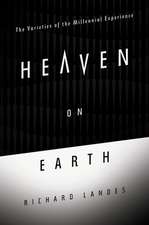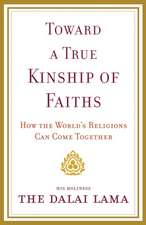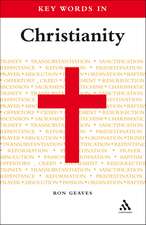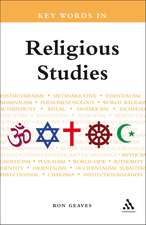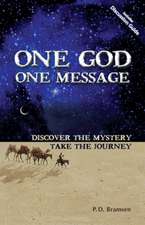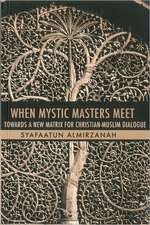Yoga, Meditation, and Mysticism: Contemplative Universals and Meditative Landmarks
Autor Professor Kenneth Roseen Limba Engleză Hardback – 7 sep 2016
| Toate formatele și edițiile | Preț | Express |
|---|---|---|
| Paperback (1) | 237.84 lei 6-8 săpt. | |
| Bloomsbury Publishing – 21 mar 2018 | 237.84 lei 6-8 săpt. | |
| Hardback (1) | 773.81 lei 6-8 săpt. | |
| Bloomsbury Publishing – 7 sep 2016 | 773.81 lei 6-8 săpt. |
Preț: 773.81 lei
Preț vechi: 1112.93 lei
-30% Nou
Puncte Express: 1161
Preț estimativ în valută:
148.10€ • 154.02$ • 123.93£
148.10€ • 154.02$ • 123.93£
Carte tipărită la comandă
Livrare economică 14-28 martie
Preluare comenzi: 021 569.72.76
Specificații
ISBN-13: 9781472571687
ISBN-10: 1472571681
Pagini: 264
Dimensiuni: 156 x 234 x 19 mm
Greutate: 0.52 kg
Editura: Bloomsbury Publishing
Colecția Bloomsbury Academic
Locul publicării:London, United Kingdom
ISBN-10: 1472571681
Pagini: 264
Dimensiuni: 156 x 234 x 19 mm
Greutate: 0.52 kg
Editura: Bloomsbury Publishing
Colecția Bloomsbury Academic
Locul publicării:London, United Kingdom
Caracteristici
First book to use a sophisticated comparative perspective to discuss contemplative practice and experience over multiple religious traditions, religious studies, philosophy, neuroscience, and the cognitive science of religion
Notă biografică
Kenneth Rose is Senior Research Fellow,Graduate Theological Union, Berkeley, California, USA, and Professor of Philosophy and Religion, Christopher Newport University, Virginia, USA. He is the author of Pluralism: The Future of Religion (2013) and Knowing the Real: John Hick on the Cognitivity of Religions and Religious Pluralism (1996) as well as numerous academic articles and reviews.
Cuprins
Table of Figures Acknowledgments Note on Transliteration, Spelling, and Translations Prologue Introduction Part One1. A New Comparative Religion and the Search for Contemplative Universals 2. Recovering the Mystical in the Reign of Constructivism 3. Biological Essentialism and the New Sciences of Religion Part TwoIntroduction to Part Two: Charting the Common Itinerary of the Contemplative Experience 1534. The Concentrative Itinerary of the Buddhist Jhanas 5. The Concentrative Itinerary of Yogic Samadhi 6. The Concentrative Itinerary of Catholic Unio Mystica Conclusion Bibliography Index
Recenzii
Rose's work showcases the continuing utility of comparative study and CSR, and will be of value to scholars and practitioners interested in perennialism, comparative study of religion, mysticism, and cognitive study of religion.
Kenneth Rose rehabilitates interreligious comparison as a necessary and powerful tool of Religious Studies. Moreover, he shows how comparative work on religious experience benefits from the insights of cognitive science and neuro-physiology without falling into the trap of materialistic reductionism. Studies like his created a constructive and much needed link between Comparative Religion and Interreligious Theology.
Kenneth Rose's Yoga, Meditation and Mysticism breaks through the somewhat stagnant discussion between the impoverished arguments of the perennialist/essentialist proponents of mysticism and the by now predictable rebuttals to these from the contructionists. His project is to recover or rehabilitate religious essentialism, but not, like his perennialist predecessors, based on a search for shared underlying concepts or universal symbols, which are easy targets for constructivist deconstruction, but based on the trans-cultural commonalities of contemplative experiences themselves. Using deeply researched case studies from Buddhism, Yoga and the Christian traditions, Rose identifies five "contemplative universals' or shared landmarks of the meditative journey common to these traditions. In other words, he identifies an almost identical set of meditative experiences accompanying the deepening focus of consciousness in these traditions precisely because they are based in experience rather than preconditioned doctrine. Rose harness neurobiology to his cause here (ironically, given it is a field primarily inhabited by materialists convinced of a neurological correlate of consciousness), where meditative states show repeatable, observable neurological chemistry that is shared trans-culturally, and trans-doctrinally and therefore not socially constructed. Part of Rose's stated purpose is to seek to loosen the all too often dogmatic materialistic presuppositions and reductionistic ideologies that hold sway over the production of much scholarship in the academic field of Religion, and secure a sui generis grounding for the religious life, at least in its contemplative forms, eschewing the pitfalls of previous efforts in this regard. Thus Yoga, Meditation and Mysticism will likely be welcomed by intellectually responsible meditation practitioners who seek a spirituality grounded in a trans-sectarian metaphysics of meditation that resonates with cutting edge research in the emerging field of contemplative neuroscience. And I envision it will certainly be a seminal text for the next generation in the academic study of mysticism.
Insofar as theorizing on religion and mysticism, on comparison and approaches to religious experience, Rose's latest book is a must-read: the argument is compelling, carefully researched, effectively structured, and convincingly presented.
Kenneth Rose rehabilitates interreligious comparison as a necessary and powerful tool of Religious Studies. Moreover, he shows how comparative work on religious experience benefits from the insights of cognitive science and neuro-physiology without falling into the trap of materialistic reductionism. Studies like his created a constructive and much needed link between Comparative Religion and Interreligious Theology.
Kenneth Rose's Yoga, Meditation and Mysticism breaks through the somewhat stagnant discussion between the impoverished arguments of the perennialist/essentialist proponents of mysticism and the by now predictable rebuttals to these from the contructionists. His project is to recover or rehabilitate religious essentialism, but not, like his perennialist predecessors, based on a search for shared underlying concepts or universal symbols, which are easy targets for constructivist deconstruction, but based on the trans-cultural commonalities of contemplative experiences themselves. Using deeply researched case studies from Buddhism, Yoga and the Christian traditions, Rose identifies five "contemplative universals' or shared landmarks of the meditative journey common to these traditions. In other words, he identifies an almost identical set of meditative experiences accompanying the deepening focus of consciousness in these traditions precisely because they are based in experience rather than preconditioned doctrine. Rose harness neurobiology to his cause here (ironically, given it is a field primarily inhabited by materialists convinced of a neurological correlate of consciousness), where meditative states show repeatable, observable neurological chemistry that is shared trans-culturally, and trans-doctrinally and therefore not socially constructed. Part of Rose's stated purpose is to seek to loosen the all too often dogmatic materialistic presuppositions and reductionistic ideologies that hold sway over the production of much scholarship in the academic field of Religion, and secure a sui generis grounding for the religious life, at least in its contemplative forms, eschewing the pitfalls of previous efforts in this regard. Thus Yoga, Meditation and Mysticism will likely be welcomed by intellectually responsible meditation practitioners who seek a spirituality grounded in a trans-sectarian metaphysics of meditation that resonates with cutting edge research in the emerging field of contemplative neuroscience. And I envision it will certainly be a seminal text for the next generation in the academic study of mysticism.
Insofar as theorizing on religion and mysticism, on comparison and approaches to religious experience, Rose's latest book is a must-read: the argument is compelling, carefully researched, effectively structured, and convincingly presented.



